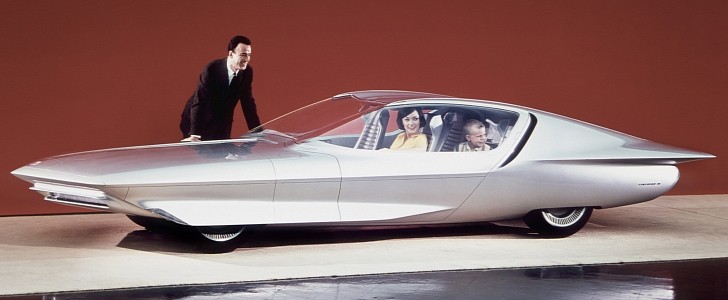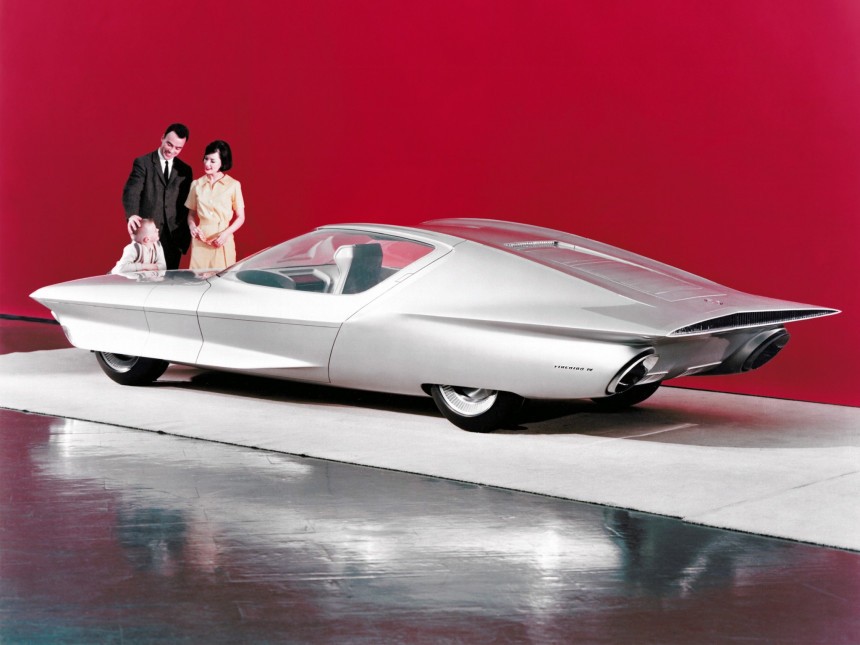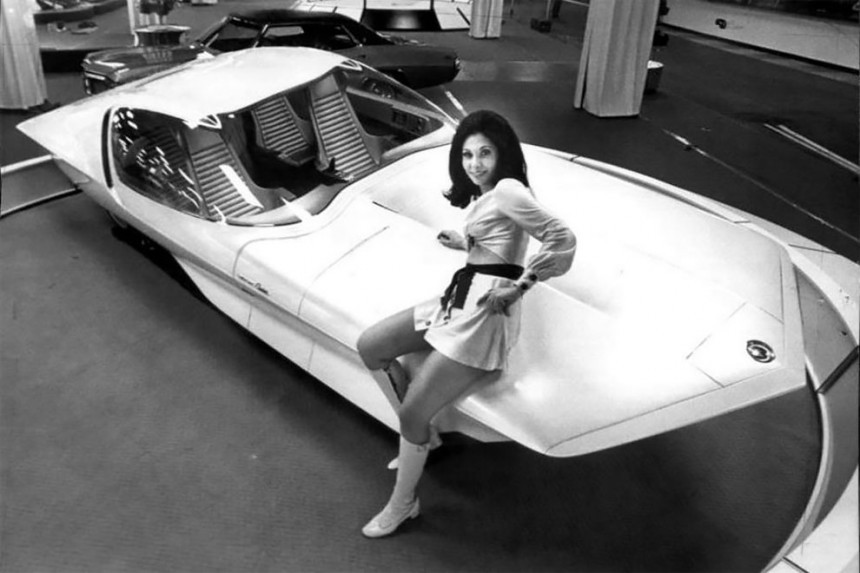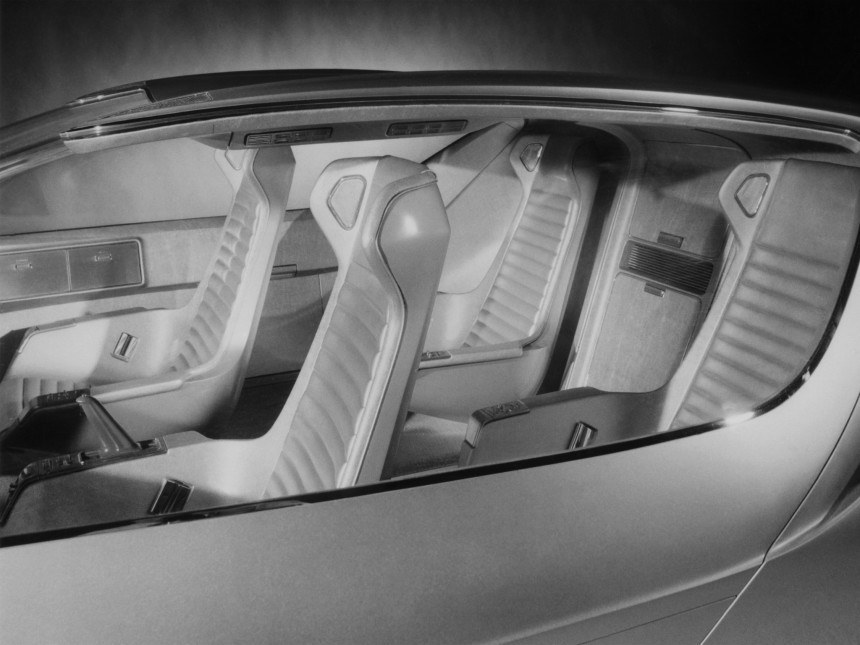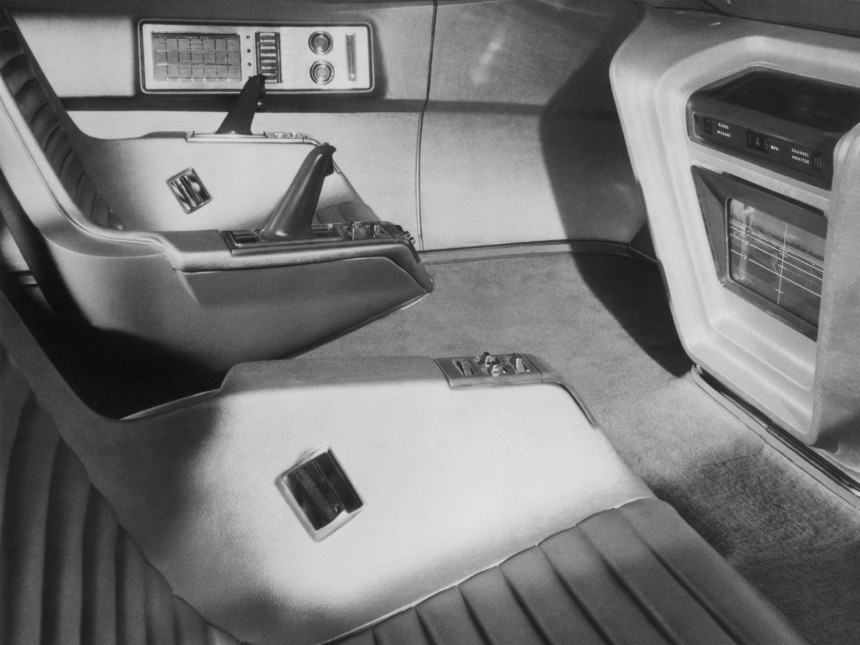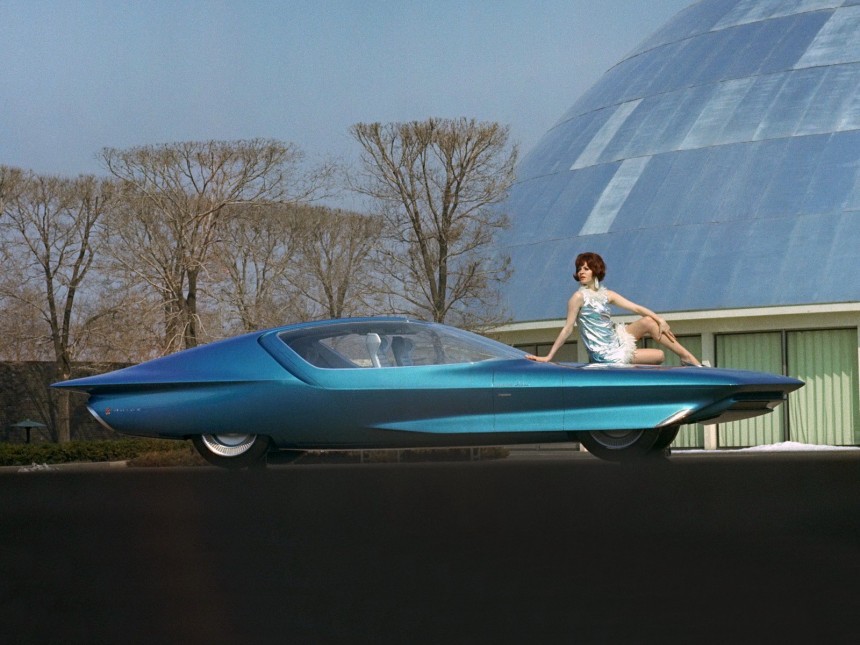Semi-autonomous cars are already a thing in 2022, and it won't be long until we won't need a steering wheel commute in our personal cars. The technology developed dramatically over the last 10 years, but the idea is far from new.
Companies have been experimenting with automated driving systems since the 1920s when Houdina Radio Control operated a 1926 Chandler using radio impulses on the streets of New York. RCA Labs and the Ohio State University also ran promising trials in the 1950s and 1960s.
Mainstream automakers didn't get involved on a larger scale until the 1990s, but that didn't stop them from creating futuristic concepts for a world where humans would no longer drive their vehicles.
General Motors did so in 1964 when it unveiled the Firebird IV at its Futurama Exhibit at the New York World's Fair.
Completely unrelated to the Firebird that Pontiac would release in 1967, the IV was part of a series of experimental vehicles that GM started rolling out in 1953. It all began with Firebird I (XP-21), a gas turbine-powered jet plane on wheels, and continued with the II, a sport four-seat car with titanium bodywork. The latter debuted in 1956.
A wild-looking Firebird III arrived in 1959 with seven wings and fins, air drag brakes, and a joystick instead of a steering wheel.
Five years later and the Firebird IV was created for a future in which cars steered automatically via "programmed guidance systems to ensure absolute safety at more than twice the speed possible on expressways of the day."
Was it a true-blue autonomous vehicle? Not really, because it was just a rolling concept. Even though GM claimed it to be a turbine-powered vehicle like the Firebirds before it, the IV never actually ran and drove. What's more, GM's idea was a bit different than today's autonomous concept, as the Firebird IV required a system of "electric highways."
There was no plan to put it into production, and GM wasn't exactly interested in developing self-driving cars at the time. It was just an exotic topic that fit the Futurama bill.
But the Firebird IV was as spectacular as futuristic concepts get. The car was incredibly sleek, and even though it lacked the III's massive amount of wings and fins, it was still heavily inspired by the jet age. The beltline became increasingly wider toward the rear, to the point it formed a wing-like element that extended a few good inches beyond the rear fascia.
Likewise, the front wheels were partly covered by slanted wings that extended from the lower front fascia all the way to the doors.
The extremely sharp nose and the turbine-like elements that flanked the rear fascia also contributed to the IV's spectacular appearance. So did the cockpit-style roof with wrap-around glass and a deeply sculpted center section.
The roof slid forward and upward to unlatch the doors, which then glided forward to provide easy access inside the cabin. Both the roof and the doors were activated at the touch of a button.
The interior itself was a mix of aviation and luxury features. While the seats were obviously inspired by jet fighters of the era, they reclined and swiveled for increased comfort and easy ingress and egress.
On top of that, the Firebird IV was pretty much a living room on wheels, thanks to a pull-out refrigerator, a folding table, and even a TV set.
The idea doesn't seem all that wild now when we're very close to being able to work, sleep, or watch Netflix while sitting in a fully autonomous car, but it was spectacular back in 1964. Especially when refrigerators and TV sets were still too big to fit in production cars.
The car's dashboard also included a special slot for punched cards with predetermined routes programmed by info provided by electric highway centers. An early navigation system, if you will.
And in case you don't know what punched cards are, they're basically pieces of stiff paper that hold digital data represented by the presence or absence of holes in predefined positions.
Pioneered in the late 1800s, punched cards have been obsolete as a storage medium for a few decades now, but they were still being used in 1964.
So what happened to the concept after its debut that year? Well, GM repackaged the idea for the 1969 show circuit as the Buick Century Cruiser.
The latter was almost entirely identical but featured a different color, a steering wheel, and a few other upgrades inside the cabin. Sadly, like most Futurama show cars, the Firebird IV was crushed in the 1980s.
But even though it ended up a big pile of scrapped metal, the Firebird eventually gave its name to the iconic Pontiac Firebird, which remained in production for a whopping 35 years.
Likewise, Buick's take on the concept signaled the return of the Century nameplate in 1973. And it stands as proof that GM had quite a few innovative ideas back in the day.
Mainstream automakers didn't get involved on a larger scale until the 1990s, but that didn't stop them from creating futuristic concepts for a world where humans would no longer drive their vehicles.
General Motors did so in 1964 when it unveiled the Firebird IV at its Futurama Exhibit at the New York World's Fair.
A wild-looking Firebird III arrived in 1959 with seven wings and fins, air drag brakes, and a joystick instead of a steering wheel.
Five years later and the Firebird IV was created for a future in which cars steered automatically via "programmed guidance systems to ensure absolute safety at more than twice the speed possible on expressways of the day."
Was it a true-blue autonomous vehicle? Not really, because it was just a rolling concept. Even though GM claimed it to be a turbine-powered vehicle like the Firebirds before it, the IV never actually ran and drove. What's more, GM's idea was a bit different than today's autonomous concept, as the Firebird IV required a system of "electric highways."
But the Firebird IV was as spectacular as futuristic concepts get. The car was incredibly sleek, and even though it lacked the III's massive amount of wings and fins, it was still heavily inspired by the jet age. The beltline became increasingly wider toward the rear, to the point it formed a wing-like element that extended a few good inches beyond the rear fascia.
Likewise, the front wheels were partly covered by slanted wings that extended from the lower front fascia all the way to the doors.
The extremely sharp nose and the turbine-like elements that flanked the rear fascia also contributed to the IV's spectacular appearance. So did the cockpit-style roof with wrap-around glass and a deeply sculpted center section.
The interior itself was a mix of aviation and luxury features. While the seats were obviously inspired by jet fighters of the era, they reclined and swiveled for increased comfort and easy ingress and egress.
On top of that, the Firebird IV was pretty much a living room on wheels, thanks to a pull-out refrigerator, a folding table, and even a TV set.
The idea doesn't seem all that wild now when we're very close to being able to work, sleep, or watch Netflix while sitting in a fully autonomous car, but it was spectacular back in 1964. Especially when refrigerators and TV sets were still too big to fit in production cars.
And in case you don't know what punched cards are, they're basically pieces of stiff paper that hold digital data represented by the presence or absence of holes in predefined positions.
Pioneered in the late 1800s, punched cards have been obsolete as a storage medium for a few decades now, but they were still being used in 1964.
So what happened to the concept after its debut that year? Well, GM repackaged the idea for the 1969 show circuit as the Buick Century Cruiser.
But even though it ended up a big pile of scrapped metal, the Firebird eventually gave its name to the iconic Pontiac Firebird, which remained in production for a whopping 35 years.
Likewise, Buick's take on the concept signaled the return of the Century nameplate in 1973. And it stands as proof that GM had quite a few innovative ideas back in the day.
